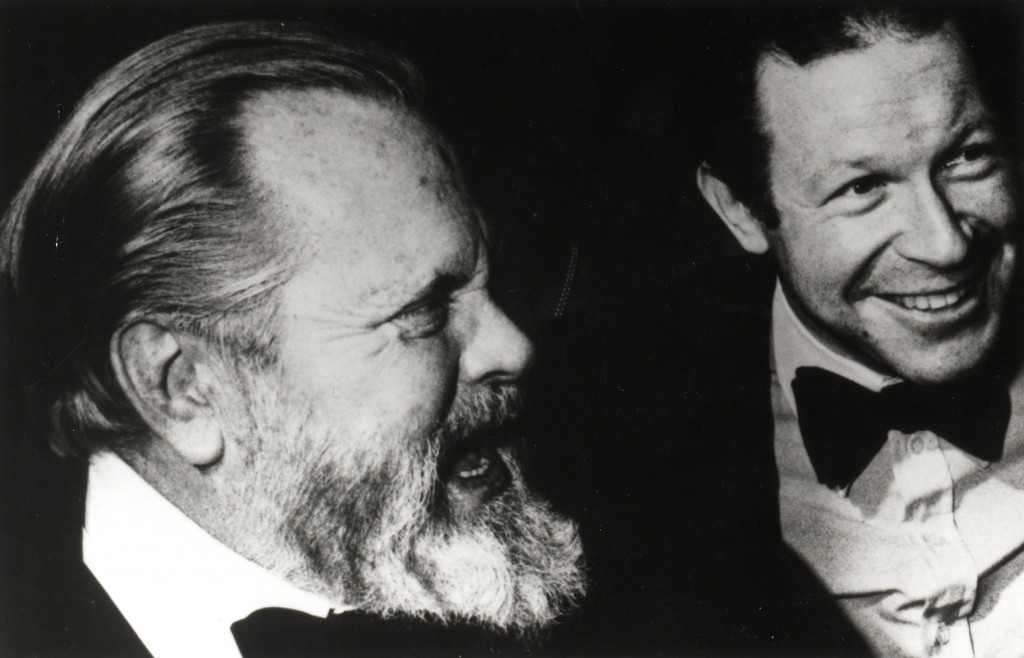【Philippines erotic】
War of the Words
Arts & Culture

Orson Welles and Henry Jaglom. Courtesy of Rainbow Films.
My Lunches with Orson, a collection of off-the-cuff conversations between filmmaker Henry Jaglom and Hollywood lion Orson Welles, recorded before Welles died of heart failure in 1985 (when his body was discovered, he had a typewriter in his lap, keystrokes from a comeback that was cruelly out of reach), arrived in bookstores last week with much fanfare. The chats were recorded weekly at the duo’s favorite restaurant, the now-shuttered Ma Maison on Melrose Avenue in Los Angeles, and were conducted not only with Welles’s consent but at his urging. The transcripts read less like a meal and more like forkfuls from a dessert cart that endlessly whizzes by. Welles stabs at topics this way and that, exposing his deepest grudges and marveling over his unmatched moments of grandeur, sometimes in the same sentence. Author Peter Biskind combed through the cassettes, dozens of which Jaglom had stashed in a shoebox, and edited them for maximum punch. In his introduction, Biskind claims this “may be the last undiscovered trove of Welles on Welles.”
Excerpts from the book, which can be snacked on online, reveal Jaglom recoiling at times as his companion blows buckshot across Hollywood. With each passing course, Welles serves up one-liners, each more potent than the last, and dismisses showbiz royalty past and present. High-powered table-hoppers are skewered the moment they’re out of earshot. Richard Burton gets the breeze. Waiters get shushed. Jaglom gets embarrassed. Even Wolfgang Puck, the chef preparing Welles’s meals, is targeted. (This was before Puck slid to Spago, the quintessential mideighties hot spot he erected off the Sunset Strip.) While Welles has no problem chortling about a leading Broadway critic who was unaware that the disgruntled staff at his favorite hotel routinely pissed in his morning tea, he doesn’t seem particularly mindful of his own tableside vulnerabilities.
Though catty at times, Welles remains an irresistible and engrossing host. Some observations are scatterbrained (“Bosnians have short necks”), and others display his trademark sagacity, such as his premonition, as a rising star in the 1930s, that producers like Irving Thalberg would soon drag a hard-charging industry into bureaucratic quicksand. At one point he even laments that Citizen Kaneis rarely interpreted as the comedy he intended it to be. Alas, the artist whose work outlives once-powerful moguls always has the last laugh, even if he’s the only one who gets the joke.
The seemingly endless fascination with Welles as an interviewee shows no signs of slowing, though it’s worth noting how exceptionally he performed when the roles were reversed. His graciousness and curiosity as an on-camera inquisitor are on display in an obscure series of shorts he made for European television in the midfifties titled Around the World with Orson Welles. Throughout these unheralded half-hour travelogues, Welles hops across Vienna, England, and Spain, chatting with and documenting the routine (but never mundane) lives of bullfight vendors, barflies, fandango dancers, and artists beyond the fringe. English-speaking expatriates often served as both guides and sounding boards for Welles’s discursive musings, most of which he punctuates with buttery winks to the camera. His sign-off is “I remain, as always, obediently yours,” an admission that even the most inward artists need to crowdsource for inspiration and breathe the same air as the audience beyond the footlights. The more exotic—or, indeed, indifferent—his subjects are to him, the better.
One segment in particular highlights Welles’s desire to push language and the art of conversation to its furthest limits. In a Paris bookshop, he corners a pocket of avant-garde poets led by Romanian provocateur Isidore Isou, who founded the Lettrism movement, which attempted, in part, to shatter the alphabet and replace it with fresh, bombastic sounds. There’s no indication or backstory on how Welles and Isou crossed paths before the cameras rolled, though it’s possible it was through Isou’s work as a filmmaker, particularly the wildly experimental Venom and Eternity, which was a sensation at the Cannes Film Festival in 1951. In the Around the World segment, Welles gives one of Isou’s devotees ample room to showcase the pliability of his new language and appears to be both fascinated and skeptical, as when he asks him to repeat one of his “letters,” perhaps to assure he isn’t being put on. As you’ll see, the replication is precise, and the moment a showstopper.
James Hughes is a writer and editor in Chicago.
Search
Categories
Latest Posts
The Silent Treatment
2025-06-26 02:22A friendly reminder to double
2025-06-26 02:17Where to watch 'Jane the Virgin' and see what the fuss is about
2025-06-26 02:14Why you love reading other people's money diaries
2025-06-26 00:49Uniting Against White Supremacy in Charlottesville
2025-06-26 00:32Popular Posts
Foul Shot
2025-06-26 02:48A friendly reminder to double
2025-06-26 02:03A friendly reminder to double
2025-06-26 01:21Lost in Boston
2025-06-26 01:04Featured Posts
Temporary Autonomous Taco Zones
2025-06-26 02:46Apple offers battery replacements for some 13
2025-06-26 02:40With Amazon Key In
2025-06-26 02:36People's Gmail accounts appear to be sending out spam
2025-06-26 01:40Techies and Tankies
2025-06-26 00:30Popular Articles
That Thing They Have
2025-06-26 03:00Where to watch 'Jane the Virgin' and see what the fuss is about
2025-06-26 02:52NOAA reveals most detailed satellite view of Northern Hemisphere
2025-06-26 02:03Newsletter
Subscribe to our newsletter for the latest updates.
Comments (235)
Openness Information Network
The Precocious Socialist
2025-06-26 03:14Universe Information Network
OLED display
2025-06-26 03:08Focus Information Network
There's a new trick to figuring out the plot of 'Westworld' Season 2
2025-06-26 01:28Speed Information Network
Ford charges into electric bike
2025-06-26 01:28Inspiration Information Network
Memory Keepers
2025-06-26 00:32